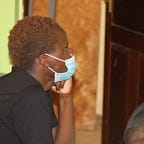The Four Steps in Learning
According to David Brooks, the author of The Social Animal, there are four steps in a learning process. Below are the steps;
Step One: Knowledge acquisition
At this stage, reading books (among other ways of consuming knowledge such as watching videos and listening to podcasts) is the main activity taking place. There are no specific ways or procedure to be followed when consuming knowledge; some of the ways to help know the types of books/videos/podcasts to consume include doing research on the Internet, word of mouth (recommendations), and by chance. It doesn’t matter is the research is dilettantish. The purpose of this stage of learning is to get the learner involved, captivated, hooked, and to get the learner to need and want more information and expertise.
Our advantage;
Human knowledge is not like data stored in a computer’s memory banks. A computer doesn’t get better at remembering things as its database becomes more crowded. Human knowledge, on the other hand, is hungry and alive. People with knowledge about a topic become faster and better and acquiring more knowledge and remembering what they learn. ~ David Brooks
Step Two: Revisiting what you learnt
The second step is [re]visiting what you’ve read for the second time. This process helps to automatize knowledge learnt during the previous step. Learning consists of taking things that are strange and unnatural, such as reading and algebra, and absorbing them so steadily that they become automatic. Revisiting what you’ve already learnt helps to unconsciously reorganize the information in your brain.
Expertise is about forming internal connections so that little pieces of information turn into bigger networked chunks of information. Learning is not merely about accumulating facts. It is internalizing the relationships between pieces of information. ~ David Brooks
Step Three: Journaling what you learnt
After periods of reading and rereading, it is time to put down what you learnt on a paper. It is highly recommended to keep your mind free — allow your mind and thoughts to bubble up from the unconscious state.
Ms. Taylor (character in the Social Animal — Harold’s teacher), believes that a student should be 75% finished with a paper before he sits down to write it. This means giving your mind time to connect things in different ways. Journaling also help to retrieve the knowledge that was buried inside and converting intuitions into language.
Step Four: Information encoding
This final step involves making sense of the information gathered in step three. In other words, it is the process of making sense of the notes taken during stage 3. Total concentration and utmost self-discipline is needed at this point.
A person who is interrupted while performing a task takes 50% more time to complete it and makes 50% more errors. The brain doesn’t multitask well. It needs to get into a coherent flow, with one network of firings leading coherently to the next. ~ David Brooks
